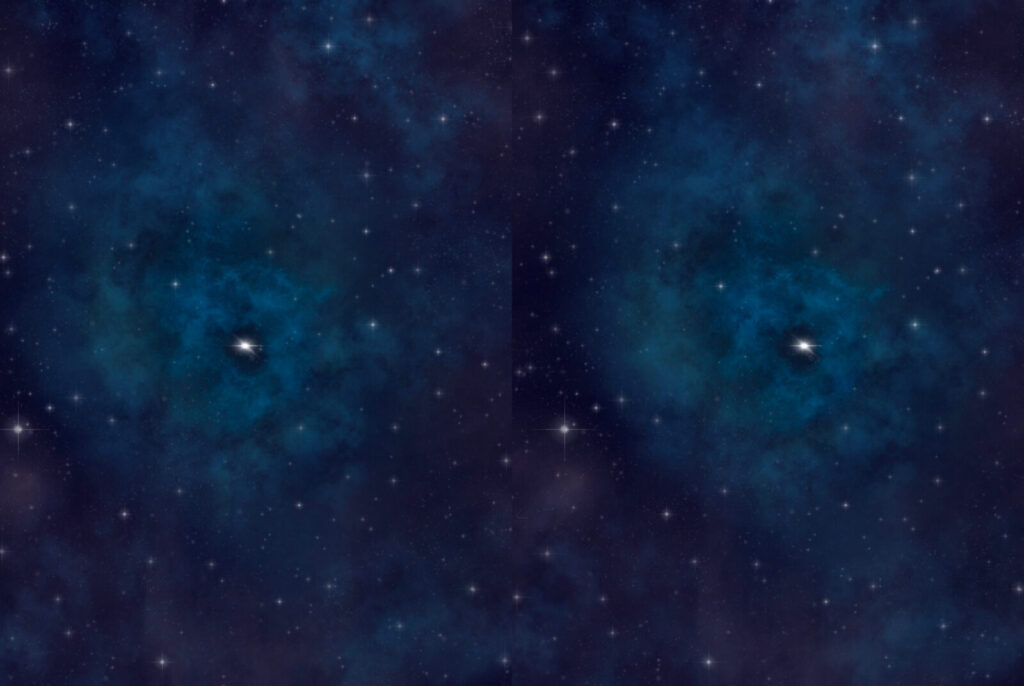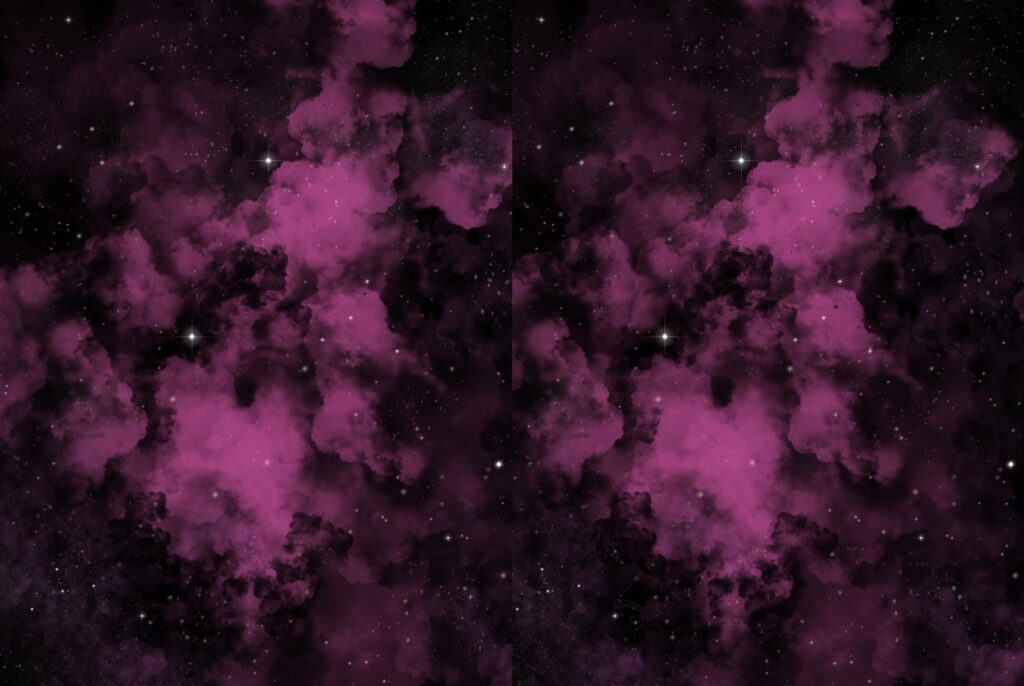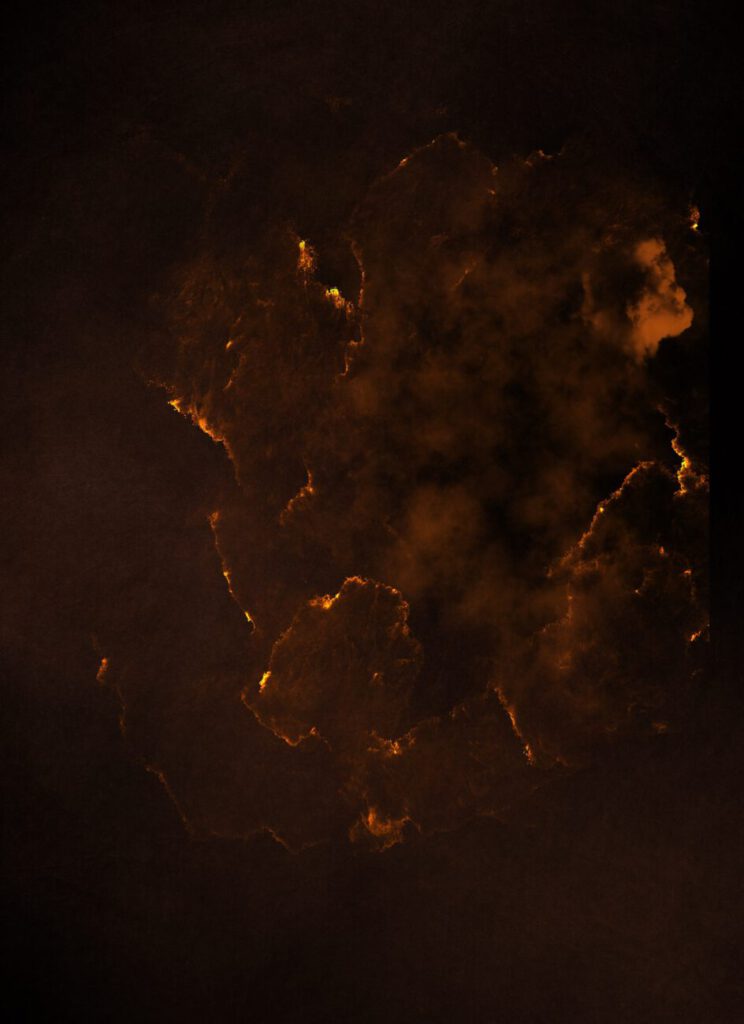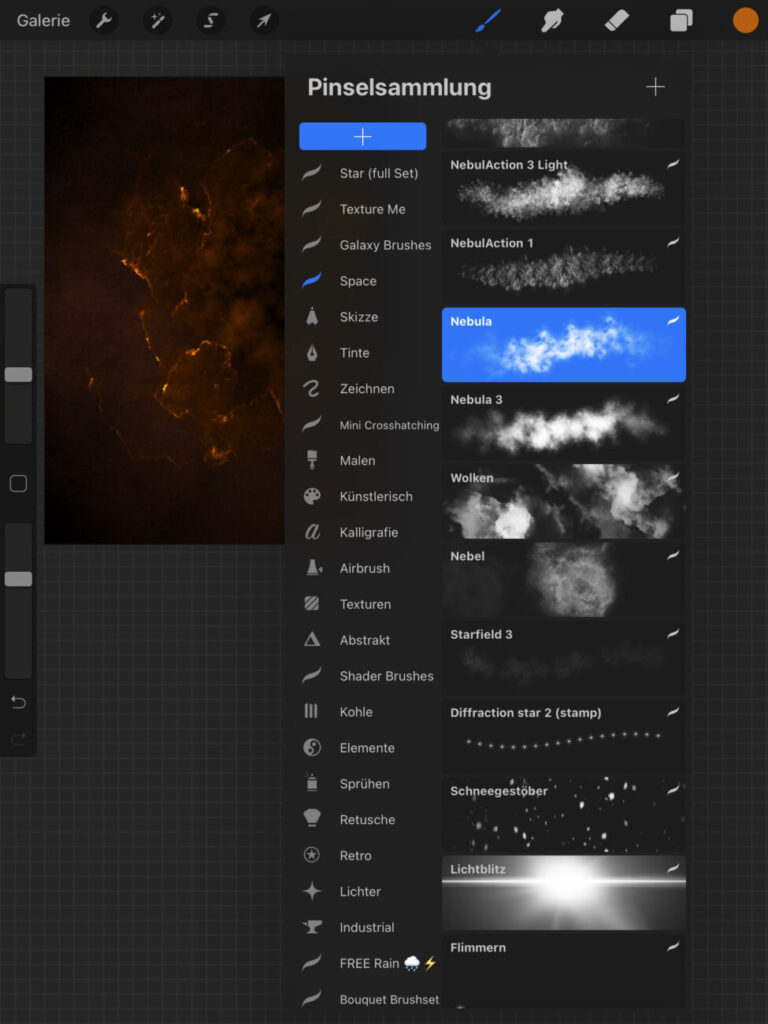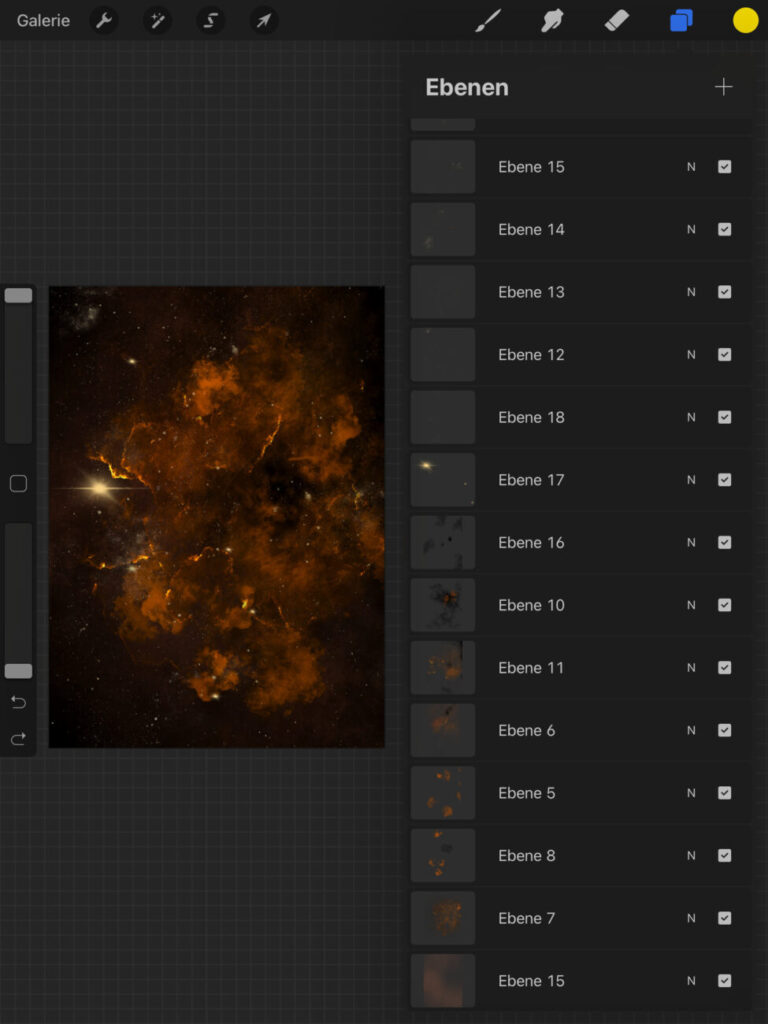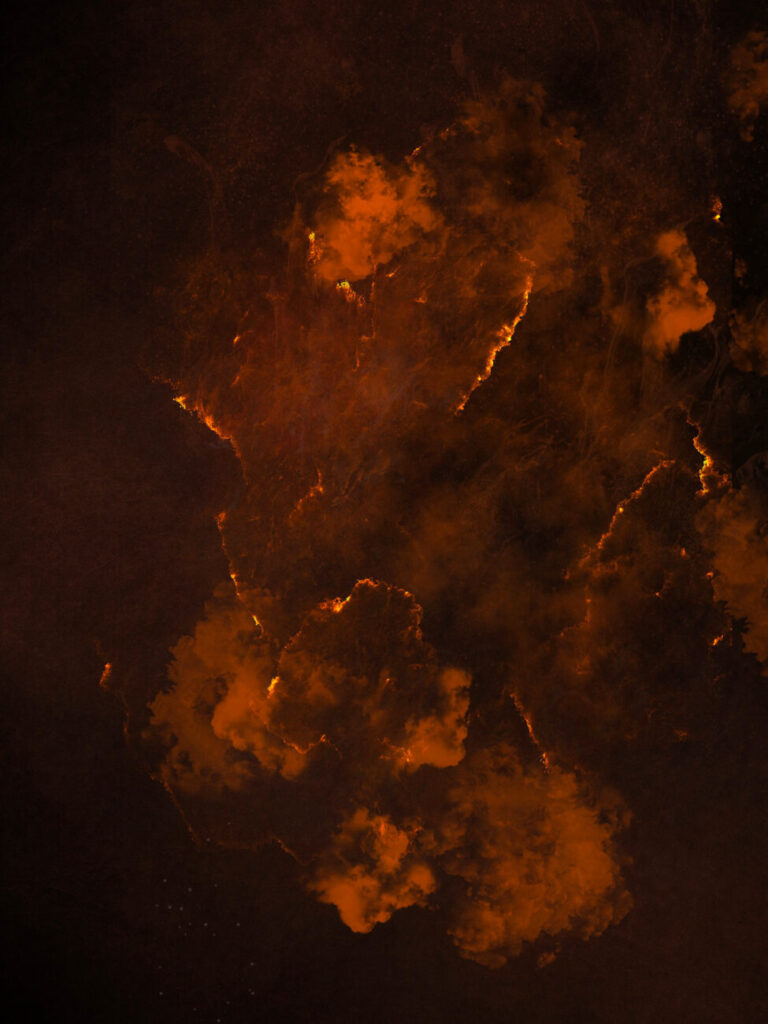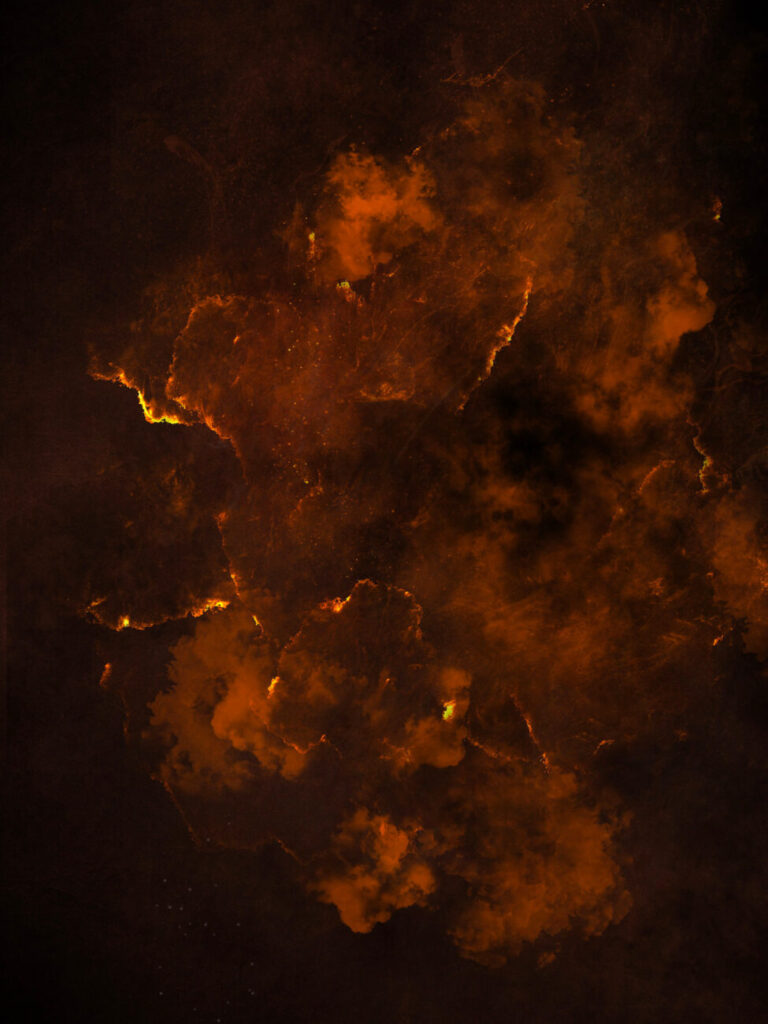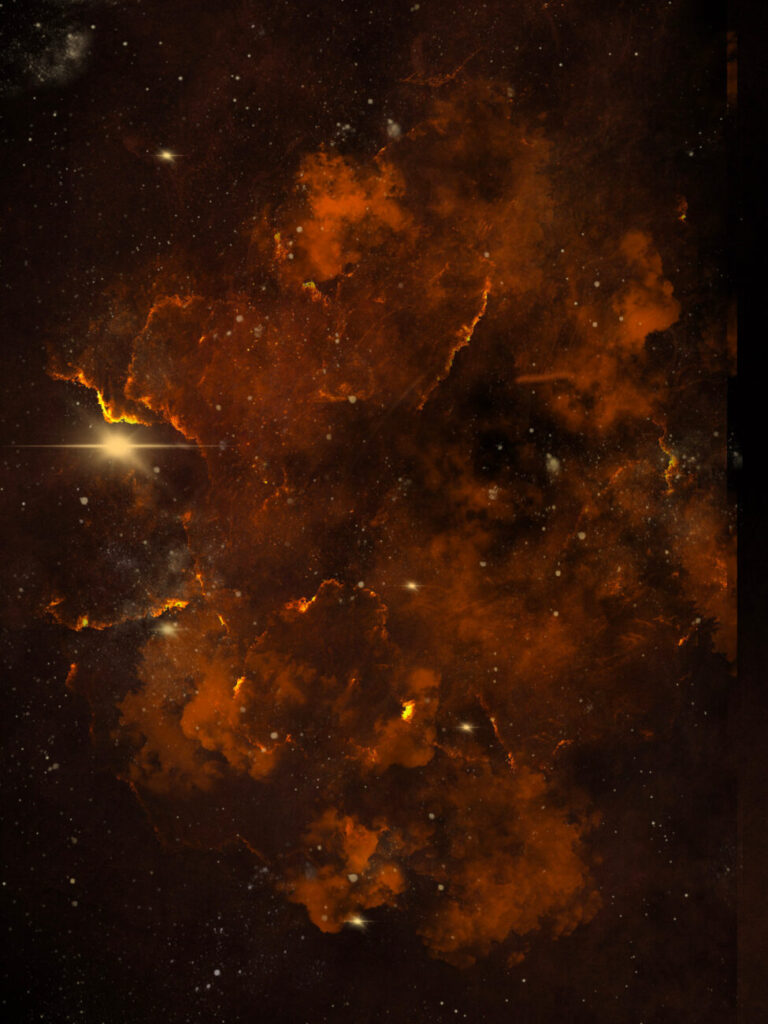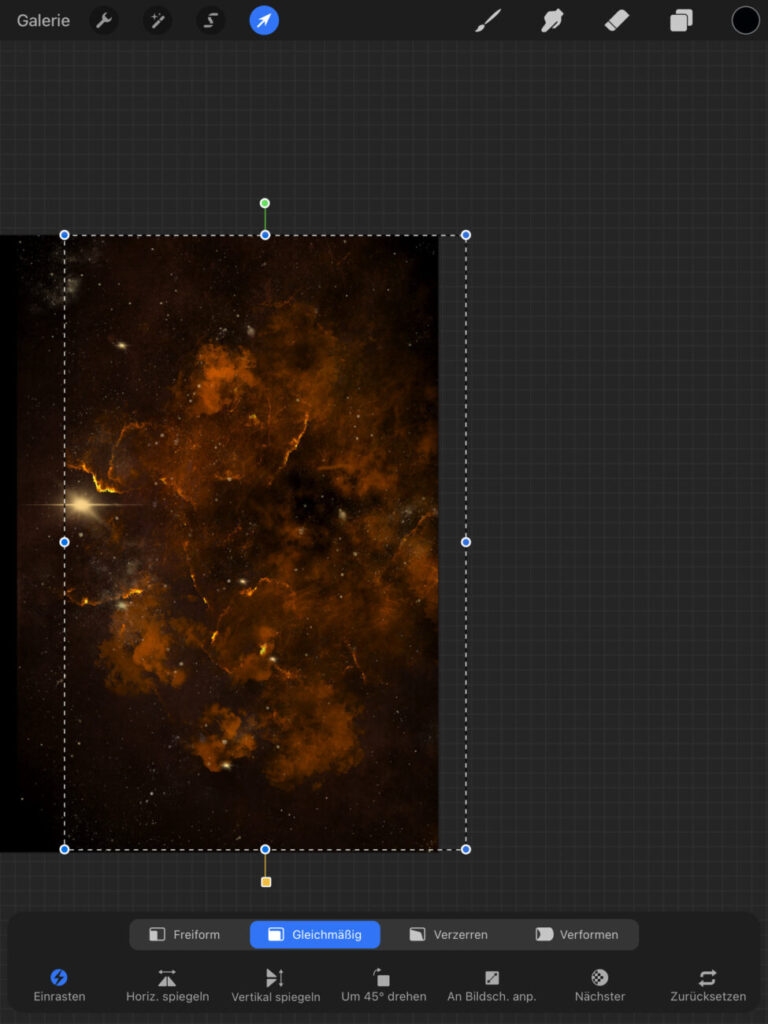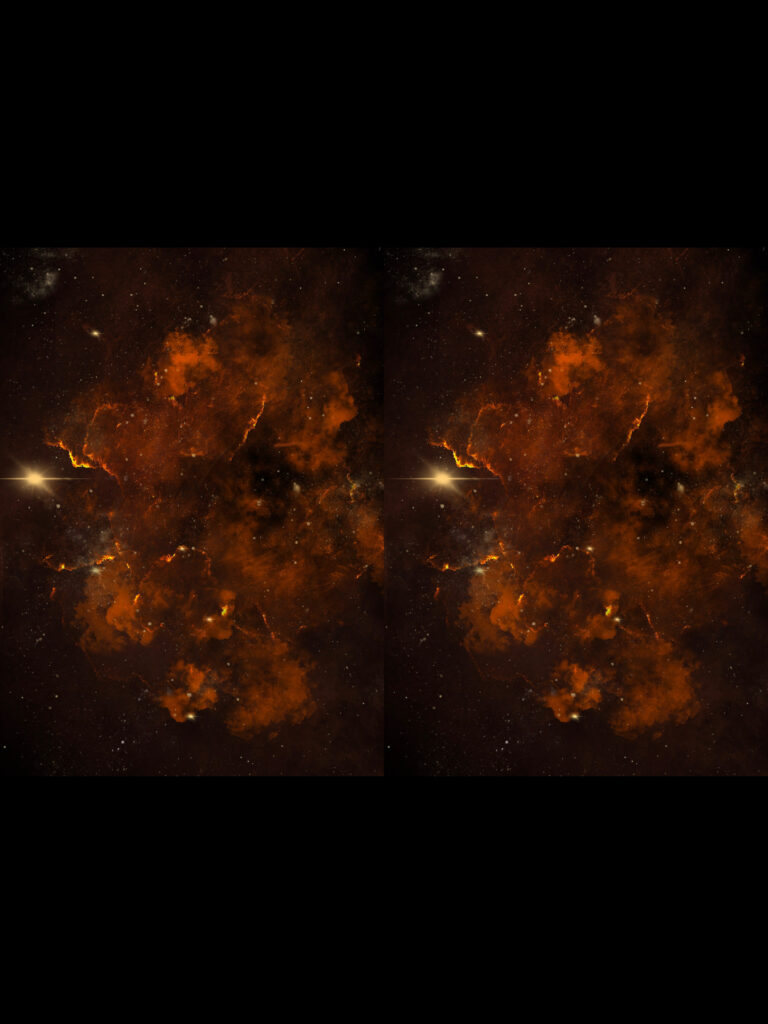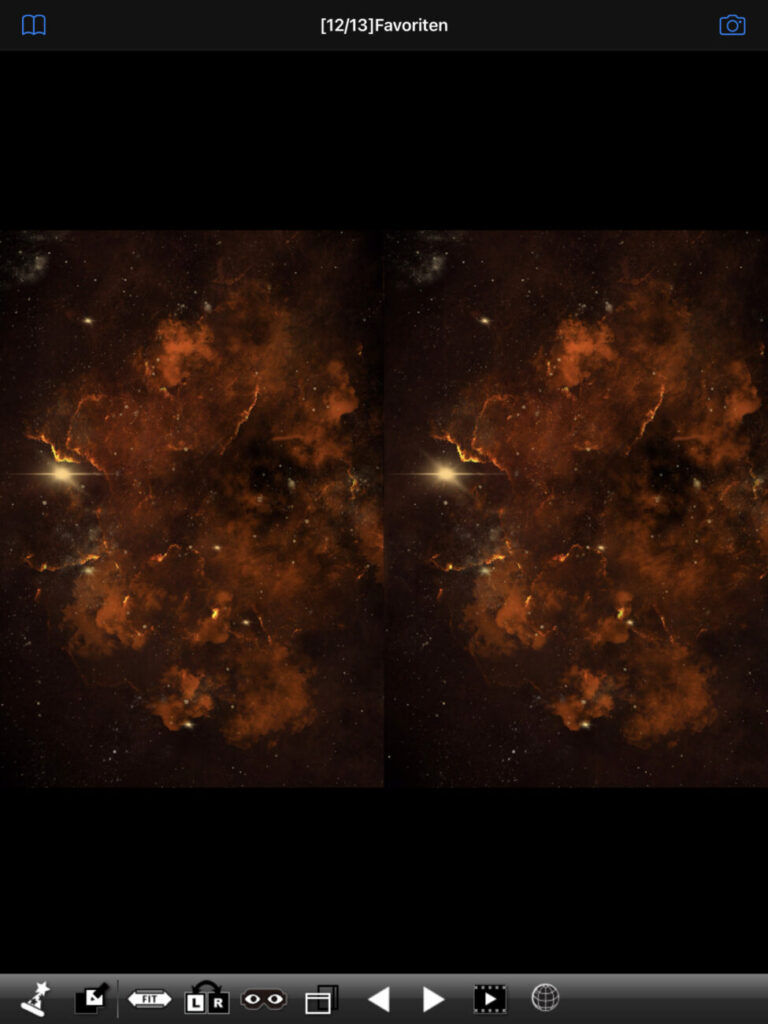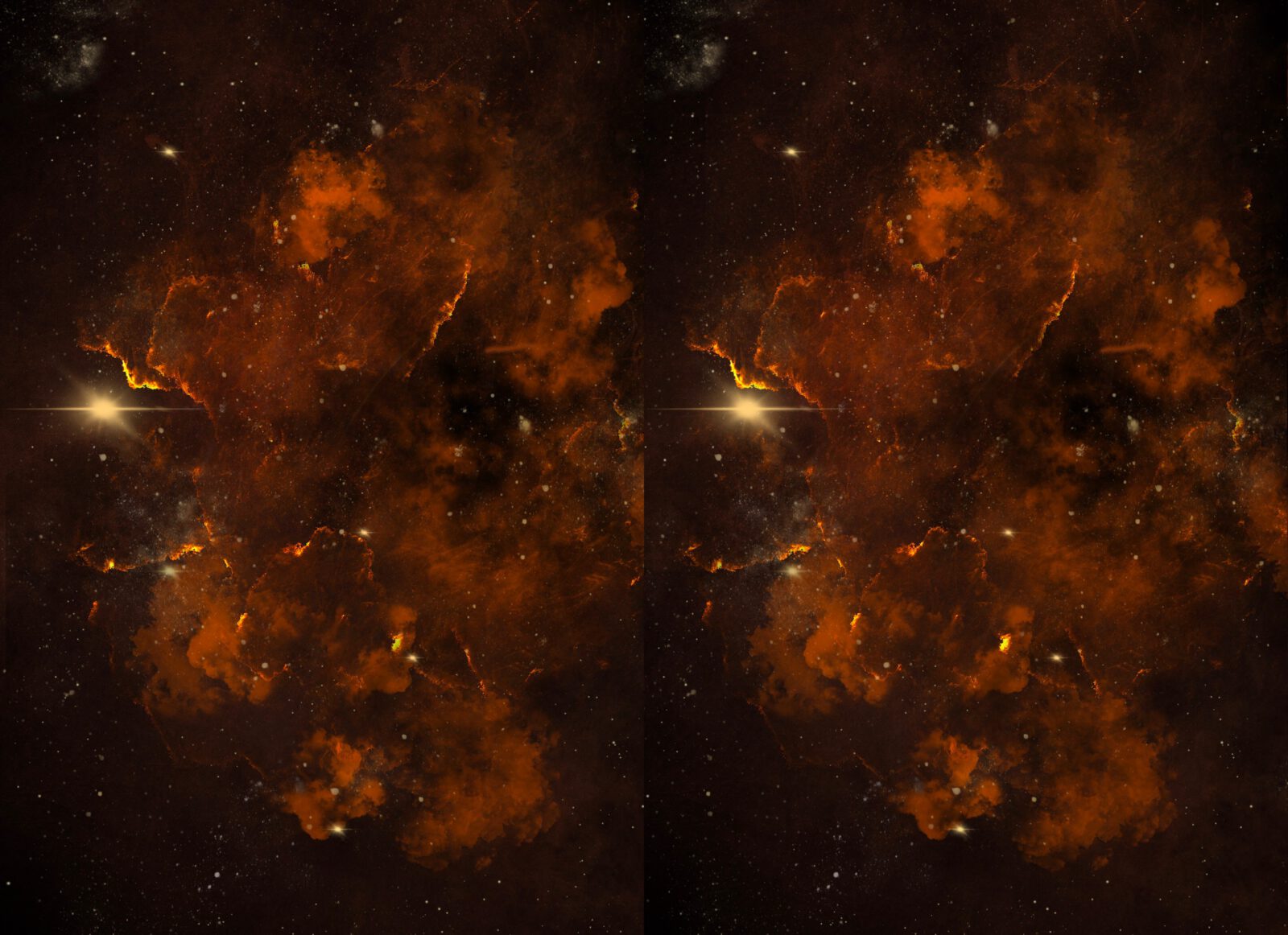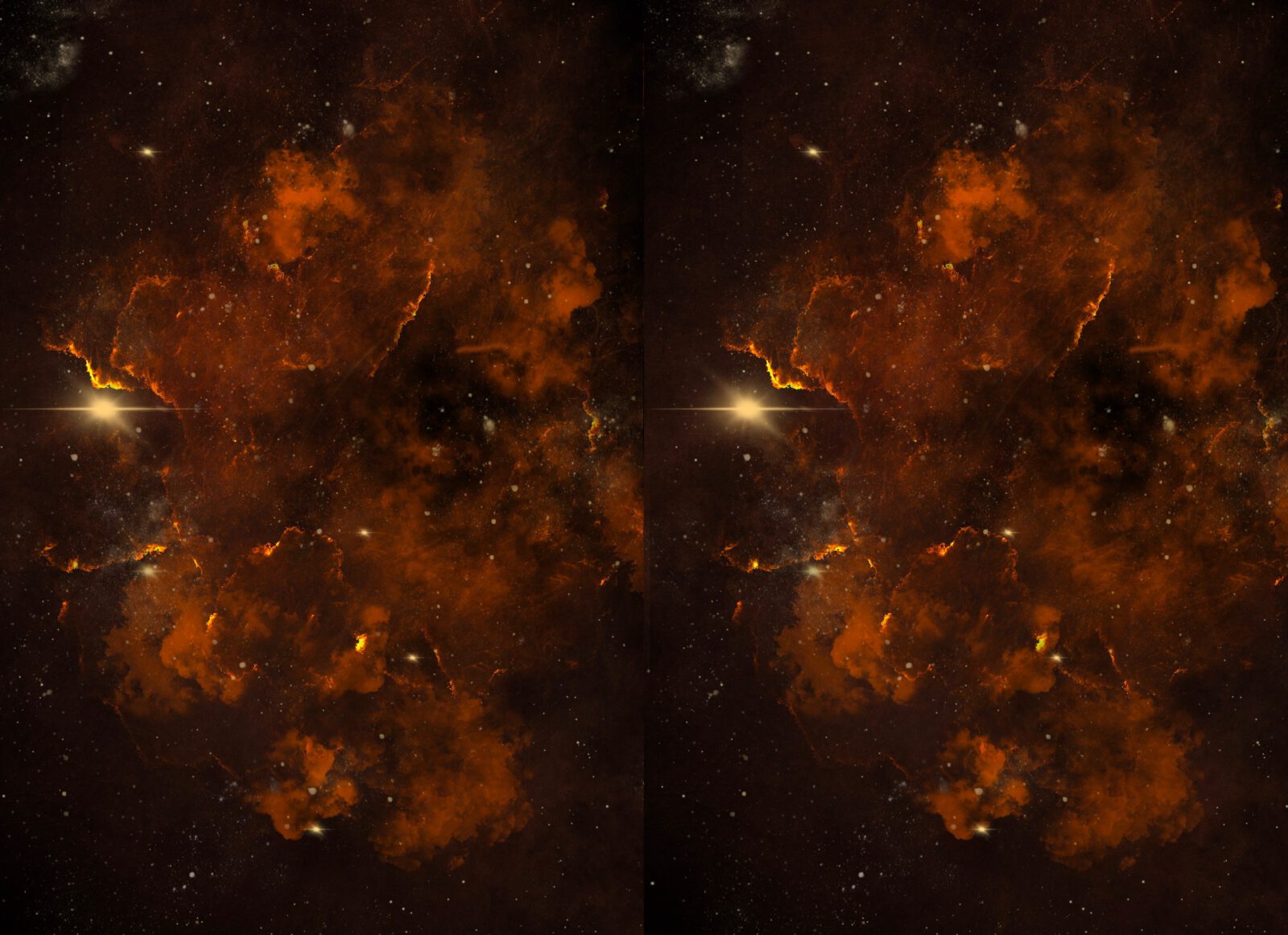Deep space stereo drawings
written for the stereosite by Vanessa Grein, Germany
Ready for a journey into deep space? Then why not create your own universe by drawing it?
Space and galaxies have always fascinated me and when I started painting some years ago I created several galaxies in the classical way — in 2D on canvas. But when the book Cosmic Clouds 3D by David Eicher and Brian May was released in 2020, I got the idea of converting my paintings into 3D by using a depthmap. And I realised that the result was far from satisfying. So I switched from canvas to digital artwork, which has the advantage of being easier to convert into a stereoscopic drawing than a traditional one.
But how can you create your own 3D universe? My deep space drawings were made on an iPad using Photoshop and Procreate, but basically any program which provides different layers will serve the purpose. The layers are the key to creating the 3D-effect.
After starting with a dark background, it is time to add the clouds. The easiest way to draw them is by using cloud or fog brushes that come with the program. But I recommend the use of different brushes to create a more realistic look. There are plenty of free presets for Procreate available, or you can just design your own brush. Be adventurous and mix different colours and shadows to achieve more variety.
It’s important to not draw all on one layer; rather, divide it onto at least two or three layers, which will be moved sideways at the end to create the stereoscopic effect. Once the nebula is finished you can put in some stars: Place them using different sizes and opacities on different layers. I use at least five or six layers because I have found that the more layers you can move, the more depth you get.
When you are happy with your drawing you can start the conversion into a stereoscopic drawing. Don’t forget to save the original one because this will be your left image. The right one is created by moving the layers some pixels to the right. The individual amount you should move the various layers depends very much on the subjects and the effect you want to achieve.
Once you have moved everything you can save the right image. Place left and right image side by side onto a new layer, or just use the StereoPhoto Maker or the i3DSteroid App which works perfectly on an iPad. I prefer the app because you I can easily check if the 3D effect is good enough or if I have to change something. I am lucky that I can freeview stereoscopic images (parallel only), but of course you can use a stereo viewer as well.
The advantage of SPM or the iD3stereoid app is that you can easily save the image for parallel and cross view. But I discovered that sometimes the same stereopair looks satisfying with both viewing methods. These are the final results.
There is not one right way of doing it, especially because my galaxies are artistic images and not photographs. Sometimes it is just trial & error until I´m satisfied with the result. And sometime I just delete it and start a new one.
Start your own space journey and always remember: There is no boundary in art. Enjoy the process of creating something new!
Want to see more? The space shuttle is waiting for you to take you to another Journey Into Deep Space!
Vanessa Grein (Aachen, Germany)
I am Vanessa Grein and I work as a spokeswoman in Aachen, Germany. My stereo journey started about five years ago but my photos had never seen the light of day until last year. Encouraged by Dr. Brian May, I shared them on Instagram and experienced a lovely warm welcome by the stereo community. Many of the photographers have their signature styles and I was looking for something new. After experimenting a lot I decided to combine my two passions — painting and stereoscopy — and came up with deep space drawings. But it might be just the beginning of a new adventure.
Instagram-profile: vanessa.grein

